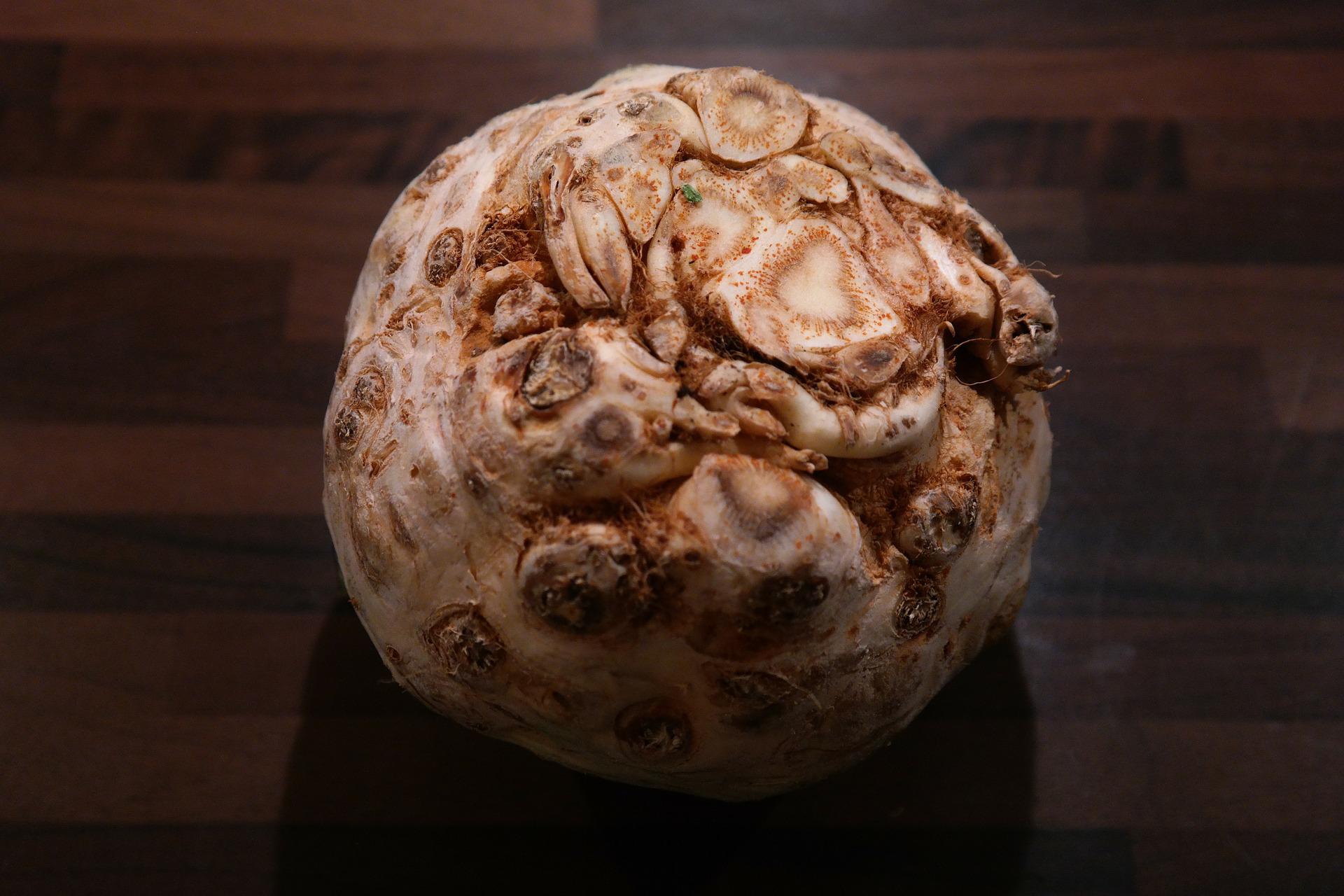Within the varieties of celery, cultivars are selected for specific desirable traits based on consumer demands.
Root Celery is the most commonly grown type in our region. It is selected for a larger, round, or oval “swollen root” with a minimal proportion of shortened stem. The root should be smooth, with minimal hairy roots on the sides (only on the lower part), which facilitates harvesting and cleaning. It is preferable for the “flesh” to be free of cavities, uniformly white, and not change color when cooked. Moderate leaf growth is desirable, as the leaves can also be utilized. Resistance to diseases is an important breeding trait, as is resistance to premature bolting, meaning cultivars are selected for a longer vernalization stage.
Cultivars of root celery (Bejo Zaden): Luna, Ilona, Diamant, Brilliant.
Leaf Celery is mainly used for processing (drying and freezing) and is harvested 2 to 3 times during the growing season. It should regenerate quickly and ideally have large leaves.
Cultivar: Safir (Bejo Zaden).
Stalk Celery is divided into two groups:
- White Stalk Celery: This type has light green petioles that are brittle with little sclerenchyma. They are not very vigorous and require denser planting.
- Green American Stalk Celery: This type has darker green petioles, is more vigorous, and is richer in vitamins than the white stalk variety. It is most valued in America, hence the name.
For both groups, an upright growth habit is desirable, with long petioles (20 – 25 cm) that should be straight, smooth, juicy, and not hollow. They are also selected for disease resistance and resistance to premature bolting.
Varieties According to Growing Season Length:
- Early
- Mid-early
- Late
Cultivar: Tango (Bejo Zaden) – medium green leaf and petiole color.
Conditions for Growth and Development
Celery can germinate at temperatures of 4-5°C. However, these temperatures are avoided during cultivation because young celery plants can vernalize at temperatures of 4-14°C in a very short time (about 10 days), leading to premature bolting and unwanted flowering. Therefore, celery is grown from transplants raised in controlled environments with temperatures maintained above 16°C. The optimal temperature for growing celery, which ensures proper development, is around 18°C.













































